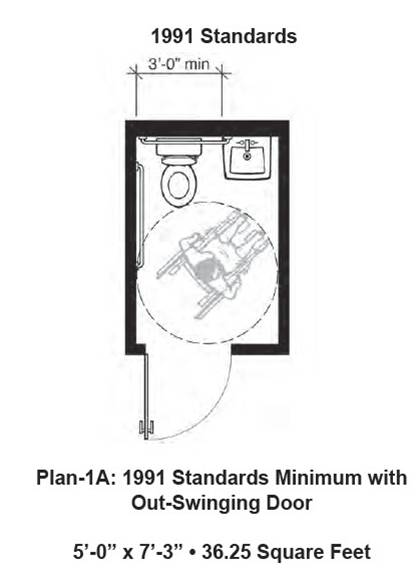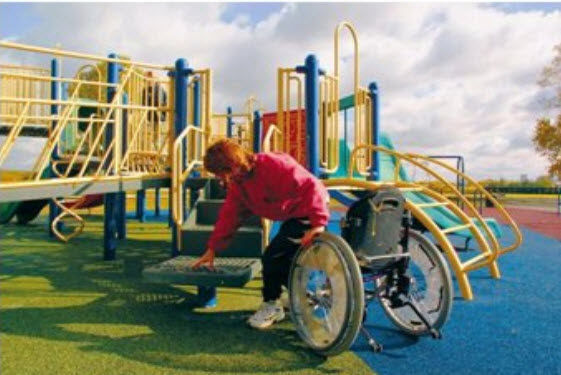1. Same numbering and format as ANSI A117.1
2. The appendix was eliminated and included in the body of the text in gray boxes.

3. Means of egress requirements is no longer part of the ADA or TAS and are now referenced back to IBC 2003 for the rules.
4. Less graphics, but better information. Be aware that figures are for reference only.
5. More van accessible spaces are required. Now the Standards require one van accessible space per every six standard accessible spaces provided.
6. Change in width of access aisle and van spaces to eleven feet wide space with a five foot access aisle (instead of eight feet). There is an exception that allows us to continue using the old standard of eight foot wide access aisle, but it is recommended to use the five foot access aisle and the 11 foot van accessible space.

7. No detectable warnings, including truncated domes and contrasting color at curb ramps. There is a requirement for detectable warning outside of the property line in the public right of way but these are found in a separate set of guidelines for public right of way.
8. Drinking fountains are required to have one for wheelchairs and one for standing, and always a forward approach with a knee space.

9. Urinals only required to be accessible where two or more urinals are provided. If there is only one, then it does not have to be accessible.
10. Restrooms will require a wider space at the water closet which does not allow a lavatory to overlap into the clear floor space. The new Standards also provided a range of 16"-18" of distance from the side wall to the center of the water closet.


11. Lowered side reach range from 54" to 48". 54" side approach reach range is not allowed.

12. Added new sections in the ADA and TAS, including court rooms, play areas and swimming pools.

For a side by side comparison of the changes to the ADA check out this table:
For a side by side comparison of the changes to the Texas Accessibility Standards, check out this table:
For Autocad version of the new figures click here